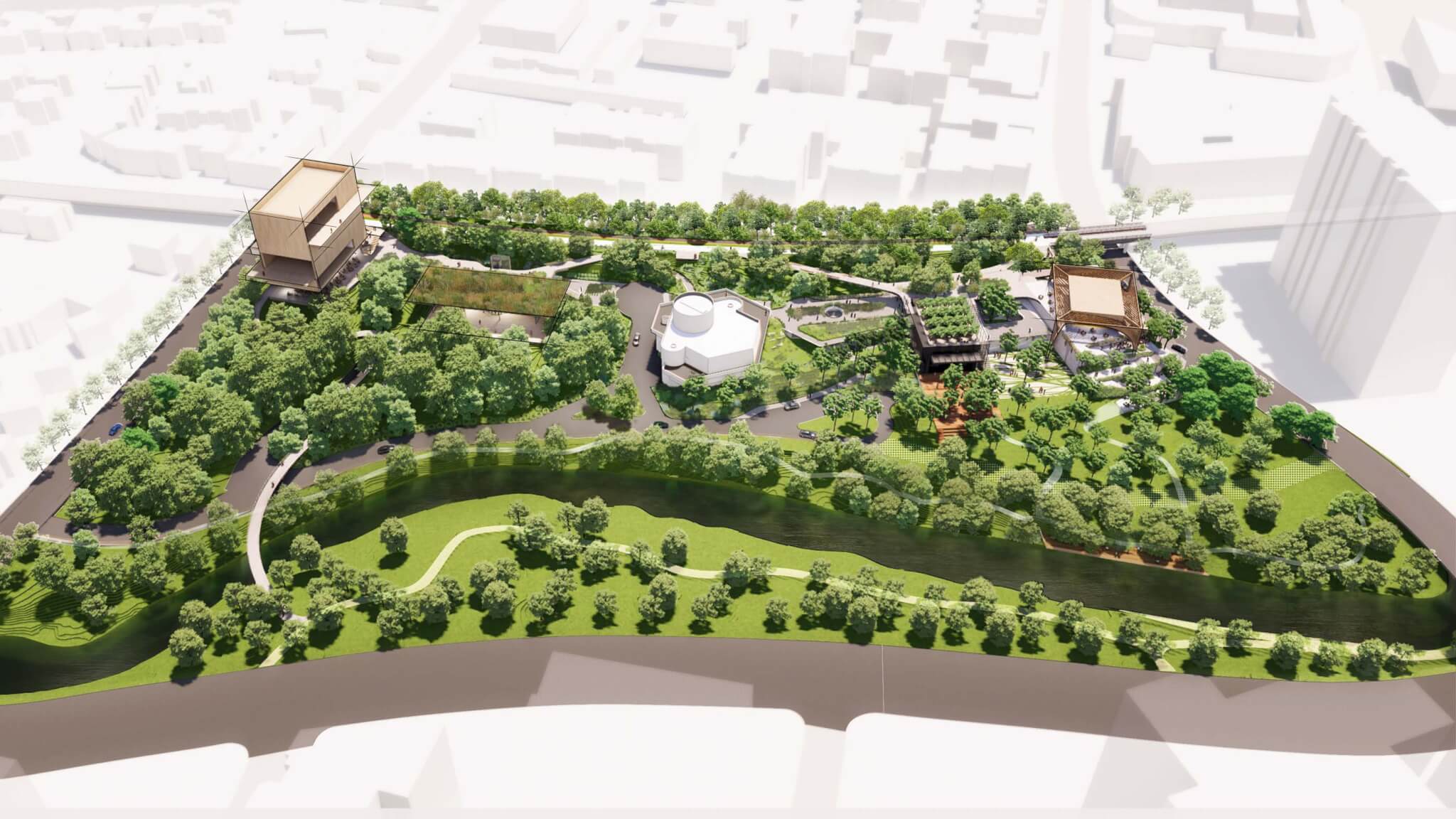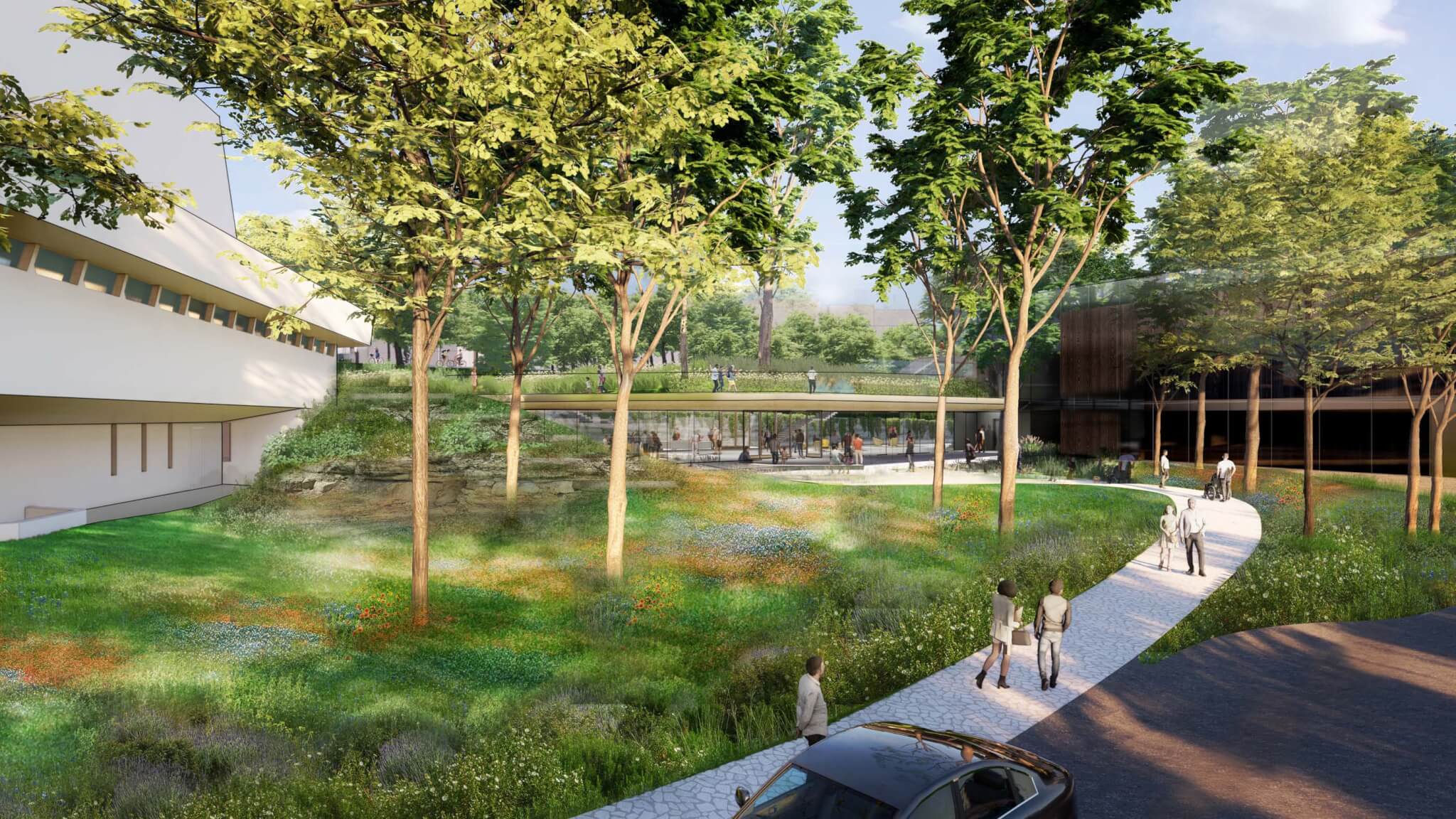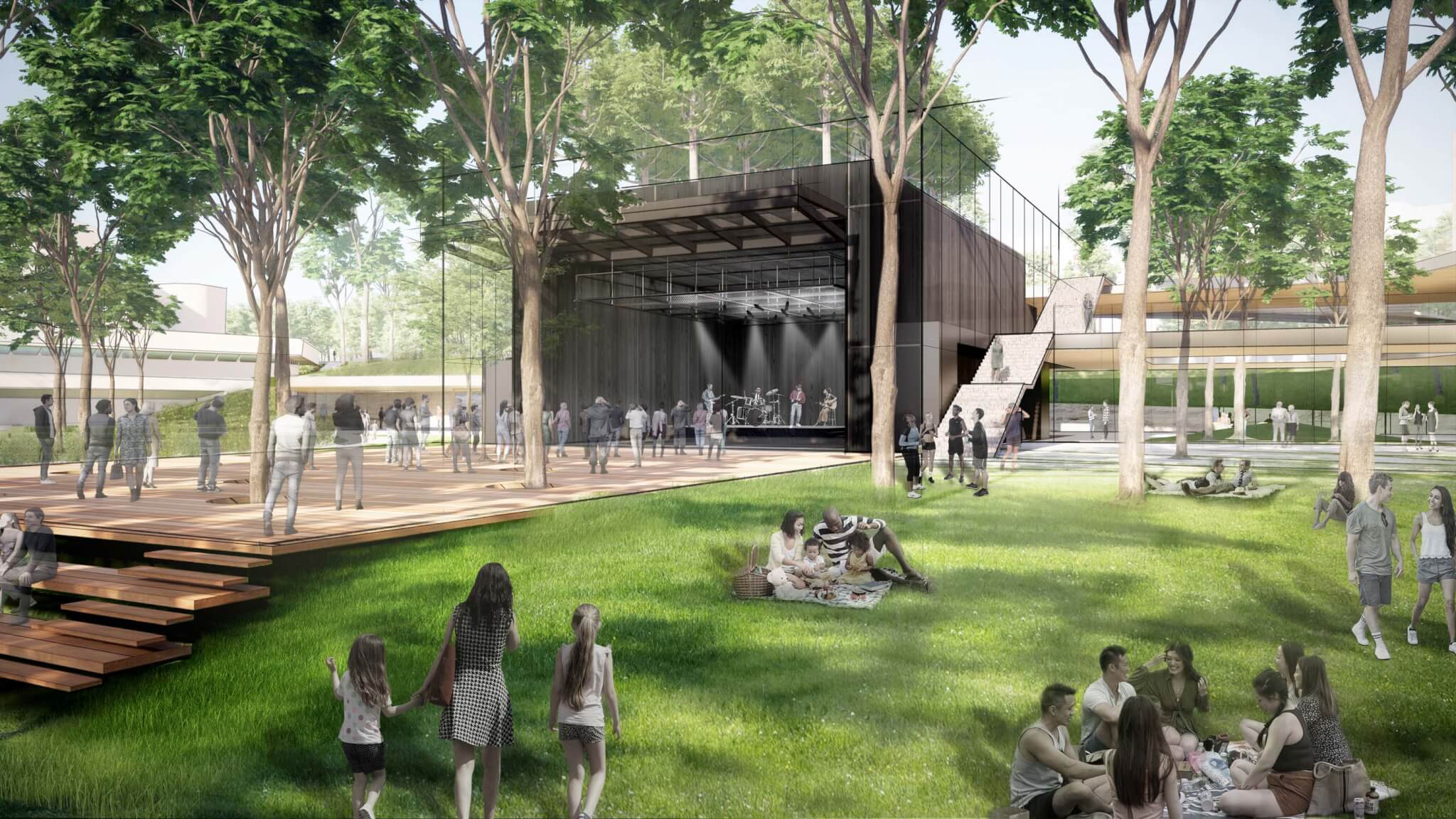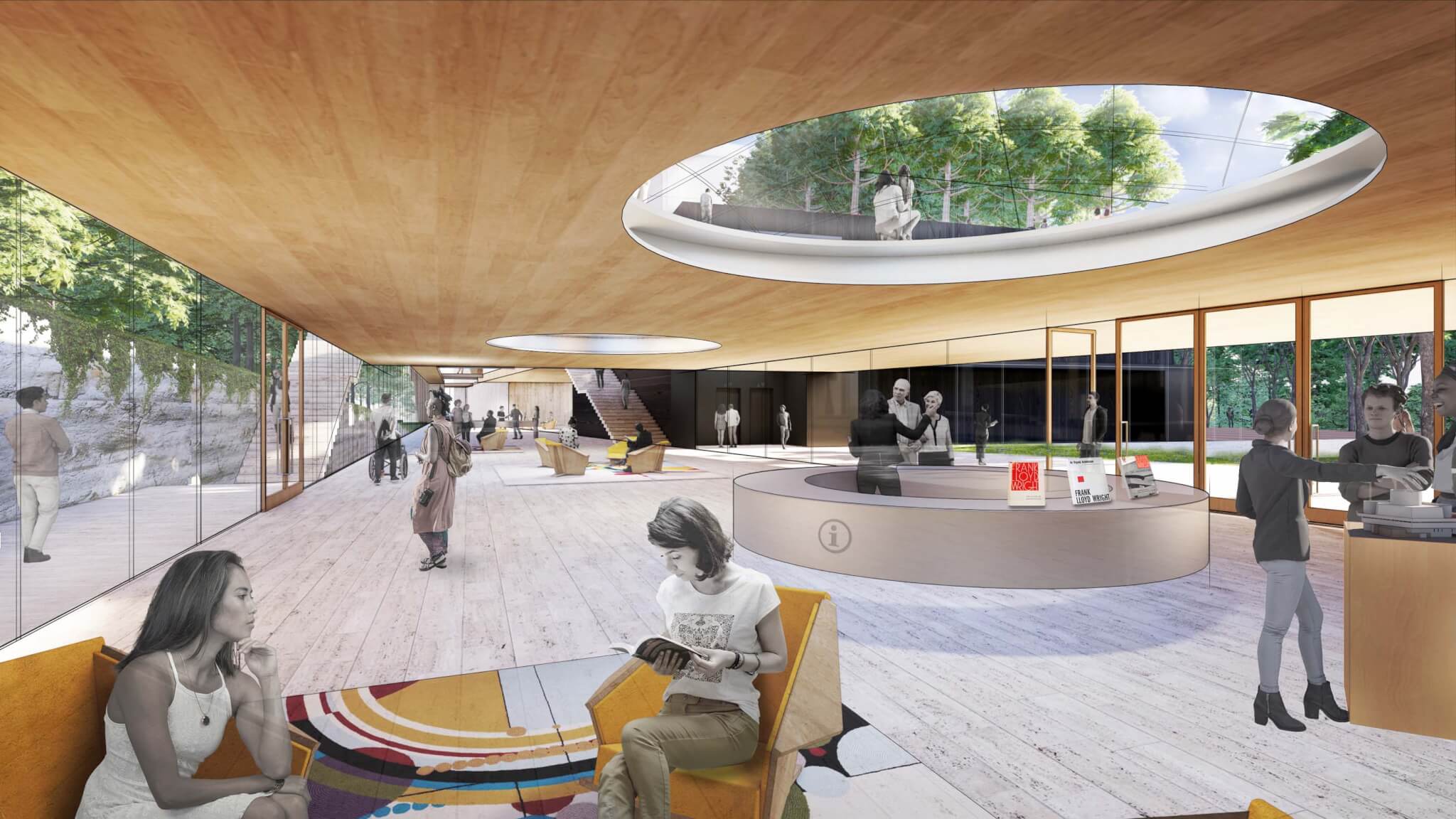Diller Scofidio + Renfro unveils plan to restore Frank Lloyd Wright theater in Dallas
Frank Lloyd Wright’s only freestanding theater design, the Kalita Humphreys Theater in Dallas’s Turtle Creek, has been extensively renovated over the years, with alteration work on the building and landscape that stripped away Wright’s idealized plan. A new master plan envisioned for the theater and its surrounding park by Diller Scofidio + Renfro (DS+R) will restore the building and landscape, reimplementing elements of the original design and improving connection points between the various existing and new venues situated across the site.
Under the master plan, the restored Kalita Humphreys Theater and a series of new pavilions will link to Turtle Creek, the Katy Trail, and the Dr. William B. Dean Park through several landscape interventions, including bridges and pedestrian and bicycle paths. The design will center around four goals: restoration of the Kalita Humphreys Theater; reimagining the surrounding parkspace; linking Turtle Creek to Katy Trail; and creating a landscape that can operate all year round.

The Kalita Humphreys Theater is operated by the Dallas Theater Center, a regional theater company. It is situated within Turtle Creek, a snaking waterway and strip of greenspace just north of Dallas’s downtown.
Plans for the theater, completed in 1959, were adapted from the designs for two other works by Wright that were never realized, one for the West Coast and the other for Hartford, Connecticut. The architect never lived to see the completion of his only freestanding theater design—a work that responds to his Organic Theory of Architecture, in which building and landscape unite. It’s that very belief that DS+R seeks to restore with its newly unveiled master plan.
“Restoring the Kalita Humphreys Theater to its original state requires a multifaceted approach that involves surgical extraction, selective reconstruction, careful preservation, and faithful reinterpretation of Wright’s design intent,” the firm shared in a design statement.

For the original theater design Wright did away with the traditional proscenium frame and created a circular stage with a rotating center platform. Under this design the audience surrounds the stage in 11 rows with a total of 404 seats. Taking this arrangement to mind, the restoration plan promises to adhere “as closely as possible to Wright’s 1959 design.” For the auditorium this means resituating the seats to mimic the original layout, but with one new stipulation that they be slightly “staggered” to improve views of the stage.
Elsewhere around the theater past alterations will be revisited, this includes the removal of an extension to the lobby added in 1968. It will also attend to the midcentury light fixtures, door handles, moldings, and furnishings in the interiors. This latest renovation isn’t just about reinstalling and reestablishing what the theater once was; it will also provide upgrades to the dated stage infrastructure, lighting, and audio visual equipment.

When initially conceived the Kalita Humphreys Theater perched on top of a limestone bluff overlooking Turtle Creek, a 1968 addition to the building removed the bluff from this location, disrupting the topography of the landscape. The terrain will now be reshaped to mimic the original state. Other upcoming alterations to the landscape include removing invasive bamboo species, planting native vegetation, and creating a new glazed entryway and path at the east of the theater, responding to an unrealized Wright design.
Walkways, lush courtyards, and activated plazas around the site will link the Kalita Humphreys Theater to the Katy Trail, Dr. William B. Dean Park, and the surrounding neighborhoods.
“Instead of being underused and sometimes ill-used, if used at all, we can have people actually engaging with the site all throughout the day,” said Dallas Theater Center’s artistic director Kevin Moriarty.

Interspersed in the landscape are several new mass timber pavilions. One pavilion will house a 100-seat black box theater, while another conceived as a multipurpose space is ideal for programming events, classes, and workshops. At the top of a new 250-seat proscenium theater structure there will be a dining venue with indoor and outdoor seating opportunities.
“Endowed with a restored theater, a revitalized green oasis, and a series of new pavilions, the Kalita Humphreys Campus will become a village in the park – a lively civic, educational, and cultural resource for the city buzzing throughout the day,” DS+R added in its design statement.
